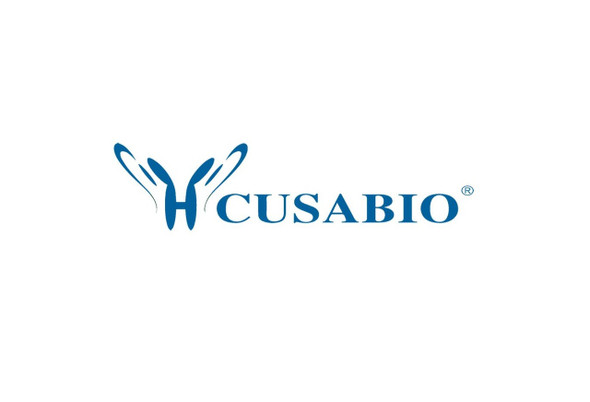Cusabio Human Recombinants
Recombinant Human Lipoyl synthase, mitochondrial (LIAS) | CSB-EP012927HU
- SKU:
- CSB-EP012927HU
- Availability:
- 13 - 23 Working Days
Description
Recombinant Human Lipoyl synthase, mitochondrial (LIAS) | CSB-EP012927HU | Cusabio
Alternative Name(s): Lipoate synthase
Gene Names: LIAS
Research Areas: Metabolism
Organism: Homo sapiens (Human)
AA Sequence: LSSLPDKKKELLQNGPDLQDFVSGDLADRSTWDEYKGNLKRQKGERLRLPPWLKTEIPMGKNYNKLKNTLRNLNLHTVCEEARCPNIGECWGGGEYATATATIMLMGDTCTRGCRFCSVKTARNPPPLDASEPYNTAKAIAEWGLDYVVLTSVDRDDMPDGGAEHIAKTVSYLKERNPKILVECLTPDFRGDLKAIEKVALSGLDVYAHNVETVPELQSKVRDPRANFDQSLRVLKHAKKVQPDVISKTSIMLGLGENDEQVYATMKALREADVDCLTLGQYMQPTRRHLKVEEYITPEKFKYWEKVGNELGFHYTASGPLVRSSYKAGEFFLKNLVAKRKTKDL
Source: E.coli
Tag Info: N-terminal 6xHis-tagged
Expression Region: 28-372aa
Sequence Info: Full Length of Mature Protein
MW: 42.9 kDa
Purity: Greater than 90% as determined by SDS-PAGE.
Relevance: Catalyzes the radical-mediated insertion of two sulfur atoms into the C-6 and C-8 positions of the octanoyl moiety bound to the lipoyl domains of lipoate-dependent enzymes, thereby converting the octanoylated domains into lipoylated derivatives.
Reference: Generation and annotation of the DNA sequences of human chromosomes 2 and 4.Hillier L.W., Graves T.A., Fulton R.S., Fulton L.A., Pepin K.H., Minx P., Wagner-McPherson C., Layman D., Wylie K., Sekhon M., Becker M.C., Fewell G.A., Delehaunty K.D., Miner T.L., Nash W.E., Kremitzki C., Oddy L., Du H. , Sun H., Bradshaw-Cordum H., Ali J., Carter J., Cordes M., Harris A., Isak A., van Brunt A., Nguyen C., Du F., Courtney L., Kalicki J., Ozersky P., Abbott S., Armstrong J., Belter E.A., Caruso L., Cedroni M., Cotton M., Davidson T., Desai A., Elliott G., Erb T., Fronick C., Gaige T., Haakenson W., Haglund K., Holmes A., Harkins R., Kim K., Kruchowski S.S., Strong C.M., Grewal N., Goyea E., Hou S., Levy A., Martinka S., Mead K., McLellan M.D., Meyer R., Randall-Maher J., Tomlinson C., Dauphin-Kohlberg S., Kozlowicz-Reilly A., Shah N., Swearengen-Shahid S., Snider J., Strong J.T., Thompson J., Yoakum M., Leonard S., Pearman C., Trani L., Radionenko M., Waligorski J.E., Wang C., Rock S.M., Tin-Wollam A.-M., Maupin R., Latreille P., Wendl M.C., Yang S.-P., Pohl C., Wallis J.W., Spieth J., Bieri T.A., Berkowicz N., Nelson J.O., Osborne J., Ding L., Meyer R., Sabo A., Shotland Y., Sinha P., Wohldmann P.E., Cook L.L., Hickenbotham M.T., Eldred J., Williams D., Jones T.A., She X., Ciccarelli F.D., Izaurralde E., Taylor J., Schmutz J., Myers R.M., Cox D.R., Huang X., McPherson J.D., Mardis E.R., Clifton S.W., Warren W.C., Chinwalla A.T., Eddy S.R., Marra M.A., Ovcharenko I., Furey T.S., Miller W., Eichler E.E., Bork P., Suyama M., Torrents D., Waterston R.H., Wilson R.K.Nature 434:724-731(2005)
Storage: The shelf life is related to many factors, storage state, buffer ingredients, storage temperature and the stability of the protein itself. Generally, the shelf life of liquid form is 6 months at -20?/-80?. The shelf life of lyophilized form is 12 months at -20?/-80?.
Notes: Repeated freezing and thawing is not recommended. Store working aliquots at 4? for up to one week.
Function: Catalyzes the radical-mediated insertion of two sulfur atoms into the C-6 and C-8 positions of the octanoyl moiety bound to the lipoyl domains of lipoate-dependent enzymes, thereby converting the octanoylated domains into lipoylated derivatives.
Involvement in disease: Hyperglycinemia, lactic acidosis, and seizures (HGCLAS)
Subcellular Location: Mitochondrion
Protein Families: Radical SAM superfamily, Lipoyl synthase family
Tissue Specificity:
Paythway:
Form: Liquid or Lyophilized powder
Buffer: If the delivery form is liquid, the default storage buffer is Tris/PBS-based buffer, 5%-50% glycerol. If the delivery form is lyophilized powder, the buffer before lyophilization is Tris/PBS-based buffer, 6% Trehalose, pH 8.0.
Reconstitution: We recommend that this vial be briefly centrifuged prior to opening to bring the contents to the bottom. Please reconstitute protein in deionized sterile water to a concentration of 0.1-1.0 mg/mL.We recommend to add 5-50% of glycerol (final concentration) and aliquot for long-term storage at -20?/-80?. Our default final concentration of glycerol is 50%. Customers could use it as reference.
Uniprot ID: O43766
HGNC Database Link: HGNC
UniGene Database Link: UniGene
KEGG Database Link: KEGG
STRING Database Link: STRING
OMIM Database Link: OMIM









